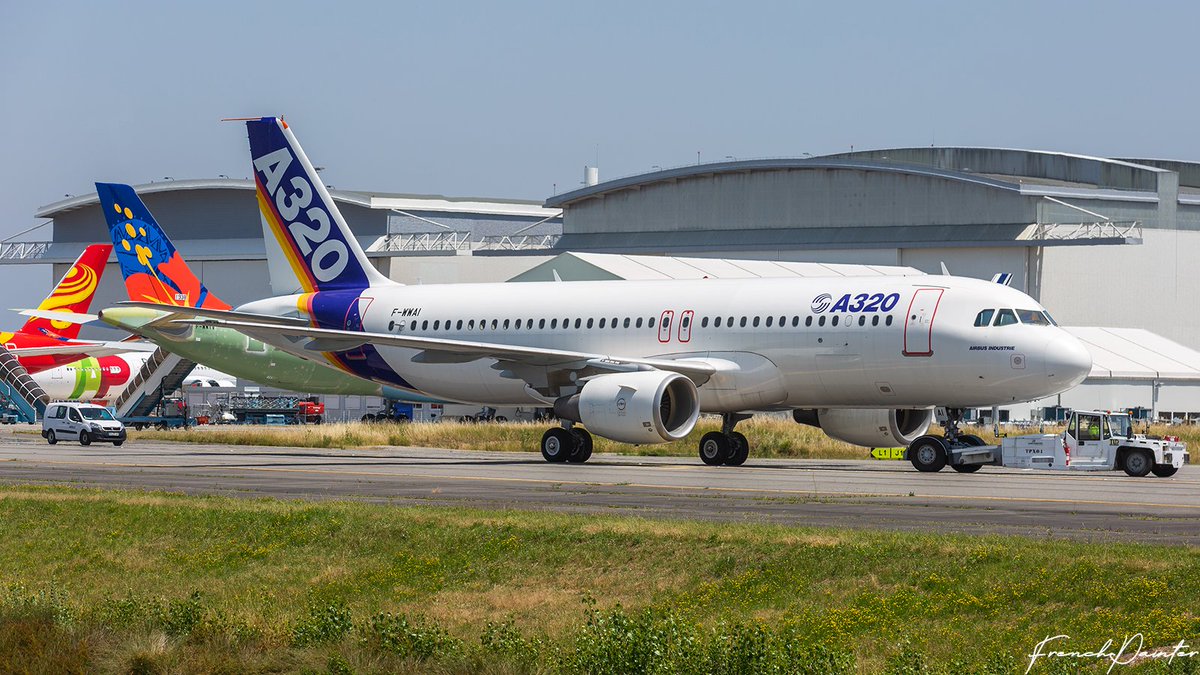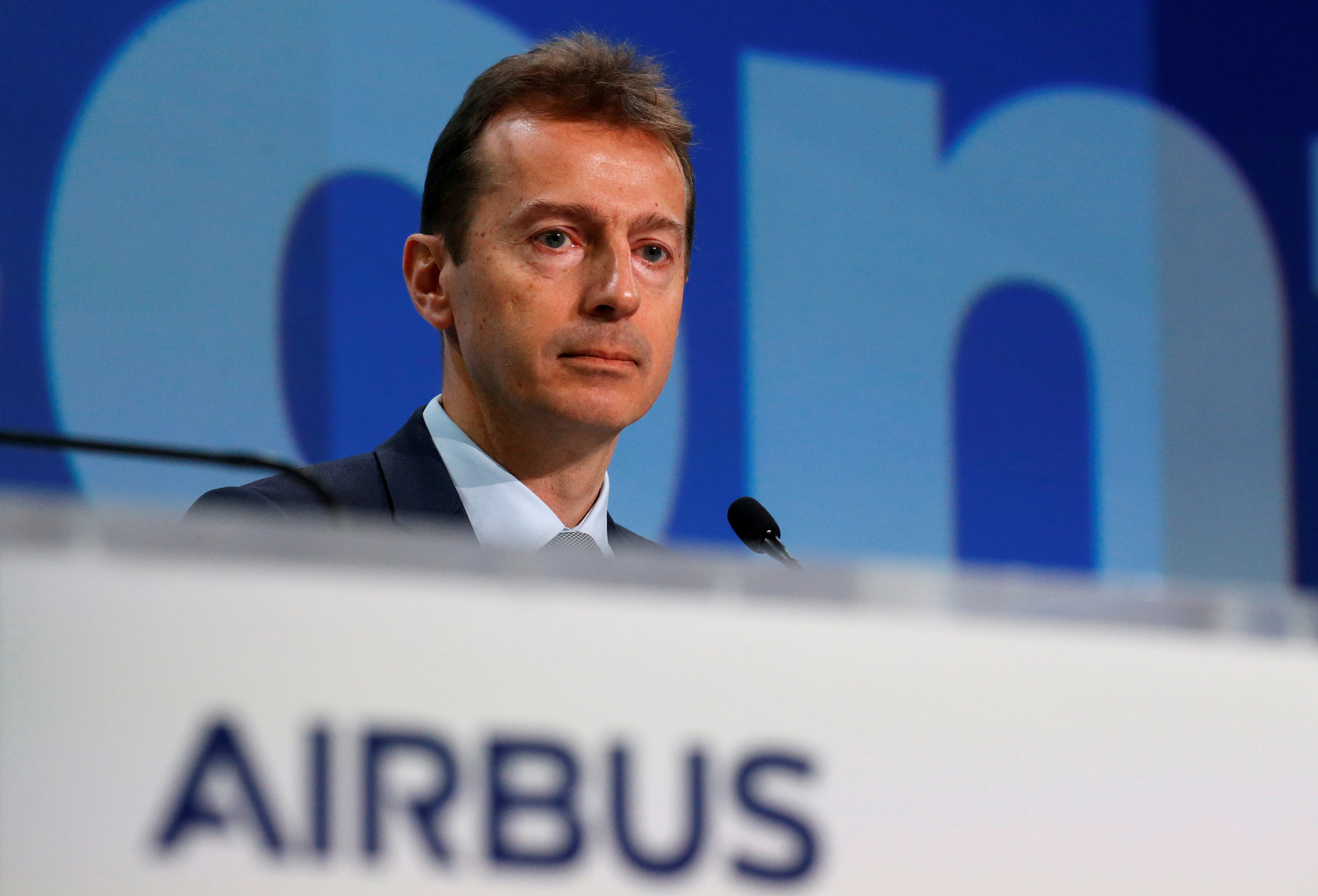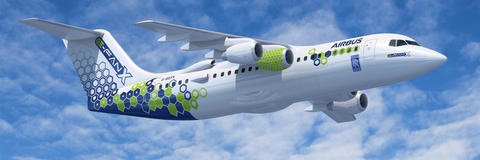The aviation industry's impact on the environment is undeniable. While it connects people and cultures across the globe, its reliance on fossil fuels contributes significantly to greenhouse gas emissions.

In recognizing this challenge, Airbus has taken the lead and launched a revolutionary mission: achieving zero-emission flight by 2035. Their ambitious endeavor, aptly named ZEROe, is not just a single aircraft but a wide program exploring various technical pathways to sustainable aviation. The heart of ZEROe lies in hydrogen, a clean-burning fuel that emits only water vapor when used in fuel cells.
Airbus CEO Guillaume Faury said: “I strongly believe that the use of hydrogen – both in synthetic fuels and as a primary power source for commercial aircraft – has the potential to significantly reduce aviation's climate impact.”

This concept involves using hydrogen fuel cells to generate electricity, which then powers electric motors and, in return, drives the propellers. Imagine a giant battery powering the plane, but instead of being charged on the ground, the "fuel" is continuously produced onboard through a chemical reaction between hydrogen and oxygen. This technology promises significant emissions reductions, particularly for short- and medium-haul flights.
While still in its early stages, Direct combustion of hydrogen is the approach that involves burning hydrogen directly in modified jet engines, similar to how kerosene is used today. Though technically complex, it offers the potential for longer-range capabilities, which are crucial for transcontinental routes.

ZEROe Demonstrator
Born in 2000, MSN1 was the test bed for the A380 that went through a rigorous testing journey, enduring extreme temperatures, water ingestion, and high-speed rejected takeoffs. It played a crucial role in certifying the A380 for commercial flight, its airframe bearing the scars of numerous tests like badges of honor. After years of service, MSN1's commercial chapter ended in 2018, but retirement wasn't in the cards for the plane.
Airbus saw a new potential in MSN1. The plan? Transform it into a testbed for hydrogen propulsion, equipped with a stub wing holding a hydrogen-powered gas turbine and internal tanks. MSN1 is set to take to the skies again in 2035, not to carry passengers but to pave the way for zero-emission flight.

"The A380 MSN1 is an excellent flight laboratory platform for new hydrogen technologies," says Mathias Andriamisaina, Airbus ZEROe Demonstrator Leader.
"It's a safe and reliable platform that is highly versatile to test a wide range of low-carbon technologies. In addition, the platform can comfortably accommodate the large flight test instrumentation that will be needed to analyse the performance of the hydrogen in the hydrogen-propulsion system."
This transformation for MSN1 is no small feat. MSN1 is undergoing extensive modifications, and its empty interior now houses the complex hydrogen systems. The journey will be challenging, with years of ground testing and data gathering ahead. However, the potential rewards are enormous; if successfully tested with hydrogen technology, it could pave the way for Airbus to develop it as a commercially viable hydrogen-powered aircraft, a crucial step towards a cleaner, greener future for aviation.

E-Fan X
The E-Fan X captured people's imagination and promised quieter, more efficient flights, a beacon of hope in a world increasingly concerned about the environmental impact of aviation. Wind tunnel tests validated its aerodynamic design, showcasing a sleek, efficient profile that promised to conquer the skies with minimal resistance.
Ground tests further fueled the excitement, demonstrating the seamless integration of its complex electric, thermal, and control systems into the body. While initially based on the BAe 146 RJ100 body, it had undergone some changes as stated by Anna Calder, E-Fan X Overall Aircraft Design Engineer, "The BAe 146 RJ100 aircraft is not designed to have hybrid-electric systems on board. We're trying to take something that exists and turn it into a hybrid-electric demonstrator.", only one of the four engines was to be replaced by a 2MW motor.

The pilot flight was set to take place in 2021 and was eagerly anticipated as it was a pivotal moment in aviation history. However, the future had different plans for this plane. In 2020, the project took an unexpected turn. With the need to prioritize other decarbonization initiatives and adapt to evolving industry needs, the difficult decision was made to cancel E-Fan X. The news was disappointing, leaving many wondering what could have been.
Demonstrator itself won't grace the skies, but its legacy is far from over. The E-Fan X project was a treasure trove of innovation, generating invaluable data and pushing the boundaries of electric and hybrid propulsion. The Airbus team gathered crucial insights into integrating high-power electric motors, managing thermal challenges, and developing robust control systems for hybrid configurations. This knowledge, documented and shared, serves as a roadmap for future endeavors within the collaborating companies and the broader aviation industry.
Perhaps the most significant contribution of E-Fan X lies in its role as a catalyst. It sparked a crucial conversation about the future of flight, demonstrating the viability and potential of hybrid and electric propulsion. Possibly inspiring other initiatives, emboldening researchers, and instilling a sense of possibility in the industry. While the project may end, its spirit fuels the collective pursuit of cleaner, quieter, and more sustainable skies.

The Blending Wing Body (BWB) Demonstrator
Airbus' Blending Wing Body (BWB) Demonstrator, a key player in the ambitious zeroE program, isn't just a plane; it's a revolution waiting to take flight. With a smoothly merged wing and fuselage, this bizarre plane embodies a daring vision where hydrogen fuels passenger travel, slashing emissions and rewriting aviation rules. But beneath its sleek exterior lies a treasure trove of technical phenomena.
The BWB design stands out from the crowd, looking almost like a manta ray. Its continuous, blended form eliminates the traditional separation between wing and fuselage, creating a more aerodynamically efficient shape. This translates to reduced drag, improved lift-to-drag ratio, and potentially significant fuel savings. But the BWB's true game-changer lies in its fuel source: hydrogen. Unlike conventional jet fuel, hydrogen burns cleanly, producing only water vapor as a byproduct, promising near-zero CO2 emissions, a crucial step towards a sustainable future for air travel.

The demonstrator will have two hybrid-hydrogen turbofan engines, each integrating a hydrogen gas turbine with an electric motor. These engines, fed by onboard liquid hydrogen tanks, will power the aircraft, showcasing the viability of hydrogen propulsion on a larger scale. This isn't just a hydrogen showcase; it's a flying testbed packed with some of the best technology Airbus offers. Its spacious, blended interior provides ample room for up to 200 passengers and the complex hydrogen storage and distribution systems.
The Advanced cryogenic tanks, specifically designed to keep liquid hydrogen at incredibly low temperatures (-253°C), will be integrated within the wings. Additionally, intricate fuel delivery systems and efficient heat management solutions will ensure the safe and reliable operation of the hydrogen powertrain. The maiden flight is a chance to validate the BWB's aerodynamic efficiency and gather crucial data on hydrogen propulsion in real-world conditions. This knowledge will pave the way for future hydrogen-powered aircraft, potentially revolutionizing air travel and ushering in an era of cleaner, quieter skies.
The BWB Demonstrator isn't just a technical wonder; it's a testament to Airbus' commitment to a sustainable future. With its blend of cutting-edge design, innovative technology, and unwavering ambition, this bold project holds the potential to rewrite the aviation rulebook, leaving a trail of clean skies in its wake. As the countdown to its first flight begins, the world watches with anticipation, eager to witness the dreams of a blended future take flight, powered by the clean promise of hydrogen.

The Turbofan Concept
The ZEROe Turbofan concept embraces a different approach. Here, the focus is on leveraging existing turbofan technology with the added hydrogen combustion.
Imagine a familiar sight – a sleek, double-aisle aircraft soaring through the sky. But unlike its conventional counterparts, this plane's engines run on cleaner hydrogen fuel. The ZEROe Turbofan embodies this vision, opting for modified gas turbine engines optimized to burn hydrogen instead of jet fuel. This strategic choice offers a potentially faster path to commercialization, utilizing existing infrastructure and technological advancements in the turbofan arena while delivering significant emissions reductions.
Instead of completely reinventing the wheel, the ZEROe Turbofan builds upon familiar ground. Two hybrid-hydrogen turbofan engines power the aircraft, integrating a hydrogen-burning core with an electric motor for added thrust and efficiency.

However, familiarity doesn't mean stagnation. The ZEROe Turbofan concept is anything but a carbon copy. The modified engines represent a significant technological leap, requiring innovative combustion technologies and materials to handle the unique properties of hydrogen. Additionally, integrating hydrogen storage and distribution systems seamlessly within the existing airframe demands clever engineering solutions.
This audacious project comes with its challenges. Questions regarding the scalability and efficiency of hydrogen combustion in large engines, infrastructure development for widespread hydrogen availability, and regulatory hurdles remain to be addressed. However, the ZEROe Turbofan presents a compelling alternative within the ZEROe program, offering a potentially faster and more pragmatic path towards achieving the ultimate goal: clean, sustainable air travel for the future.
As the ZEROe program progresses, the Turbofan concept is a testament to the power of diverse approaches. It shows that the journey towards a greener future sometimes involves more than radical reinvention. Sometimes, the most impactful change can be achieved by taking a familiar path with a crucial, sustainable twist. The ZEROe Turbofan, with its blend of tradition and innovation, embodies this spirit, offering a promising route toward a future where the skies are cleaner and the dream of emission-free flight takes tangible flight.

"These concepts will help us explore and mature the design and layout of the world's first climate-neutral, zero-emission commercial aircraft, which we aim to put into service by 2035," said Guillaume Faury.
A hydrogen ecosystem encompasses infrastructure development for large-scale production, transportation, and storage of hydrogen fuel. Partnering with governments, energy companies, and airports, Airbus aims to ensure hydrogen is readily available at key locations worldwide.
Guillaume Faury later added:
"The transition to hydrogen, as the primary power source for these concept planes, will require decisive action from the entire aviation ecosystem. Together with the support from government and industrial partners we can rise up to this challenge to scale-up renewable energy and hydrogen for the sustainable future of the aviation industry."

Challenges and Opportunities
The ZEROe journey has its burdens, as hydrogen technology is still developing and requiring significant infrastructure investments and cost reductions. Regulatory frameworks must adapt to accommodate new fuels and propulsion systems, and public acceptance and awareness will undoubtedly play a crucial role.
The next few years will be crucial for ZEROe. The demonstrator flights will gather valuable data, informing the development of the first zero-emission commercial aircraft, targeted for launch in 2027-2035. While the final configuration remains to be determined, whether it's a regional turboprop or a larger short-haul jet, it will mark a significant milestone in aviation history.
The ZEROe project represents a major shift in how we think about air travel. It's not just about building cleaner aircraft but about transforming the entire ecosystem around them. It's a large endeavor that requires collaboration, innovation, and a shared vision for a sustainable future. If successful, ZEROe could pave the way for a new era of guilt-free air travel, ensuring that future generations can continue to explore the world while protecting our planet.
Air Premia Eyes Washington-Dulles Service for 2026 » Marco Polo Airport to Cavallino: Clear Routes, Costs to Expect, and the Smoothest Arrival » Airbus Issues Urgent Safety Directive After Discovery of Solar Radiation Data Corruption Risk in A320 Family »
Comments (1)
 Louis Evans
“ The aviation industry's impact on the environment is undeniable...”
What impact has CO2 emissions from aviation had on the environment? What amount of temperature increase is aviation responsible for?
Surely the IPCC can quantify the impact aviation is responsible for?
I appreciate when the author uses the first line of their piece to regurgitate propaganda, so I don’t have to waste my time with reading the rest of the tripe.
Louis Evans
“ The aviation industry's impact on the environment is undeniable...”
What impact has CO2 emissions from aviation had on the environment? What amount of temperature increase is aviation responsible for?
Surely the IPCC can quantify the impact aviation is responsible for?
I appreciate when the author uses the first line of their piece to regurgitate propaganda, so I don’t have to waste my time with reading the rest of the tripe.
Add Your Comment
SHARE
TAGS
INFORMATIONAL Airbus ZEROe Sustainable Aviation Hydrogen Sustainability Future InnovationRECENTLY PUBLISHED
 Airbus Issues Urgent Safety Directive After Discovery of Solar Radiation Data Corruption Risk in A320 Family
Airbus has called for immediate precautionary action across all global operators of A320 Family aircraft following the discovery of a rare but critical vulnerability linked to intense solar radiation.
NEWS
READ MORE »
Airbus Issues Urgent Safety Directive After Discovery of Solar Radiation Data Corruption Risk in A320 Family
Airbus has called for immediate precautionary action across all global operators of A320 Family aircraft following the discovery of a rare but critical vulnerability linked to intense solar radiation.
NEWS
READ MORE »
 Marco Polo Airport to Cavallino: Clear Routes, Costs to Expect, and the Smoothest Arrival
How to travel from Marco Polo Airport to Cavallino, Italy.
INFORMATIONAL
READ MORE »
Marco Polo Airport to Cavallino: Clear Routes, Costs to Expect, and the Smoothest Arrival
How to travel from Marco Polo Airport to Cavallino, Italy.
INFORMATIONAL
READ MORE »
 Air Premia Eyes Washington-Dulles Service for 2026
Air Premia will launch flights from Seoul to Washington-Dulles commencing on March 30, 2026, according to local Korean media. The 6,958-mile flight will operate on Mondays, Wednesdays, Fridays, and Sundays on the airline's Boeing 787-9 Dreamliner.
ROUTES
READ MORE »
Air Premia Eyes Washington-Dulles Service for 2026
Air Premia will launch flights from Seoul to Washington-Dulles commencing on March 30, 2026, according to local Korean media. The 6,958-mile flight will operate on Mondays, Wednesdays, Fridays, and Sundays on the airline's Boeing 787-9 Dreamliner.
ROUTES
READ MORE »



